

CarExpert.com.au
The CarExpert team's favourite cars of 2025
2 Days Ago
The 911 GT3 RS is already a track weapon, so how much better can the 911 GT2 RS really be? Chris Atkinson heads to Queensland Raceway to find out.
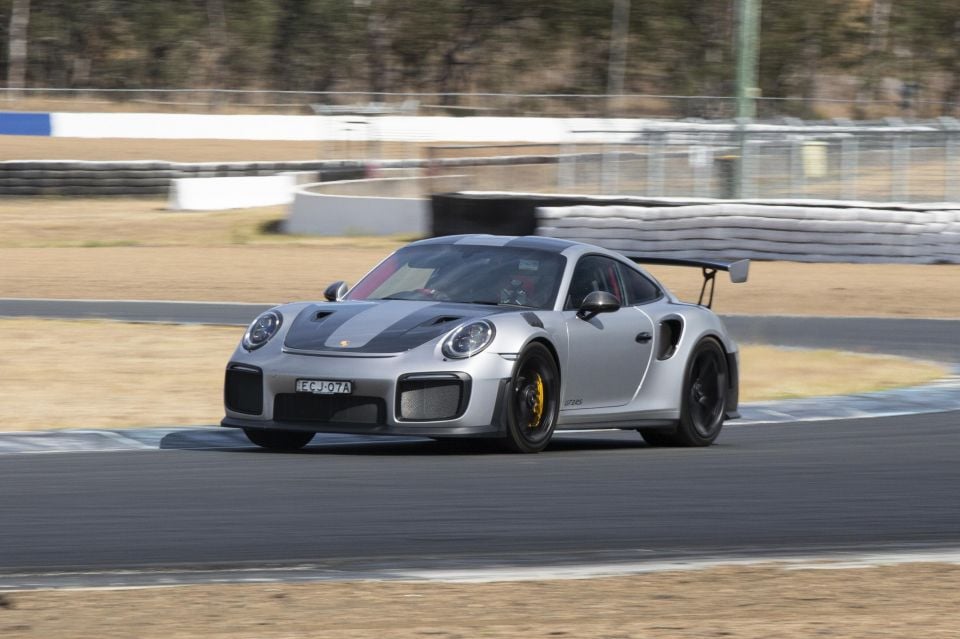
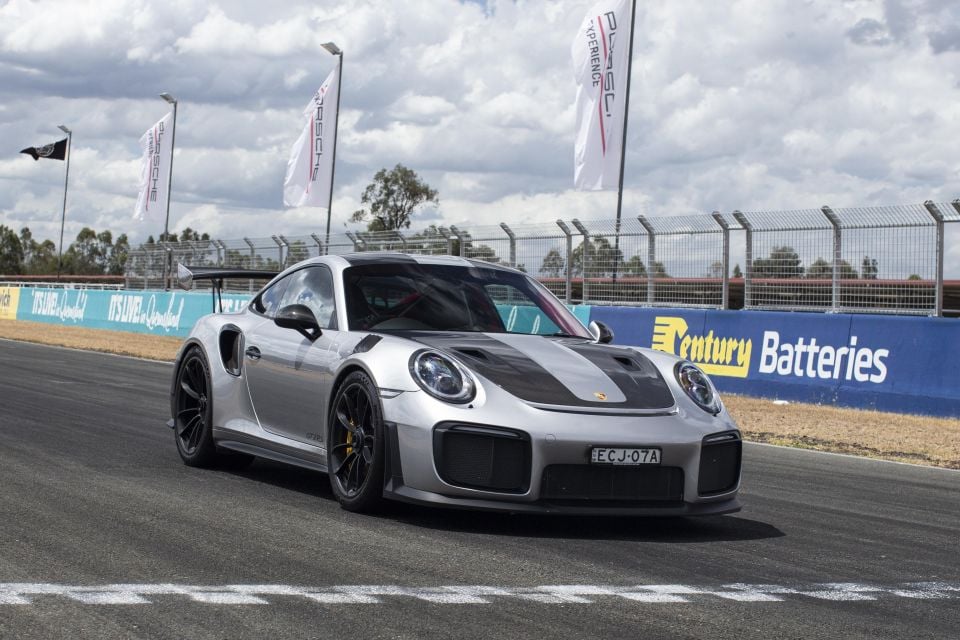

Performance Editor
New from
$645,000
excl. on-roads

Performance Editor
New from
$645,000
excl. on-roads


Performance Editor
New from
$645,000
excl. on-roads

Performance Editor
New from
$645,000
excl. on-roads
Quickly see how this car stacks up against its competition. Select any benchmark to see more details.
Where expert car reviews meet expert car buying – CarExpert gives you trusted advice, personalised service and real savings on your next new car.
Well, you couldn’t ask for a much more track focused weapon to try and set a time at our test track. The question really was – would the Porsche 911 GT2 RS actually work on such a tight and traction-limited circuit?
There were a lot of people thinking that it would struggle to match the more precise and nimble 911 GT3 RS. You can read our recent performance review for that model here.
This is a vehicle that is more suited to dominating high-speed and flowing circuits like the Nurburgring, where on our track, five of our seven corners are basically third gear or lower, with only one decent straight for it to stretch its legs.
I knew it would be more of a challenge than it looked on paper, and I knew I would have my share of fun trying to tame it.

The numbers speak for themselves – 515kW at 7000rpm and 750Nm from 2500-4500rpm, but it’s the thought that has gone into making these numbers work together that makes this engine so special.
Porsche has once again focused on how the engine delivers its power and managed it across the whole rev range.
I’m guessing most people won’t notice the sacrifices and compromises Porsche have made with this engine, the company has actually tried to make this engine useful and almost user-friendly, which is a very strange thing to say about a GT2 RS.
The performance is hard to deny, but what’s more impressive is the way it revs for a turbo engine, and it’s so drivable because the torque band is pretty much flat across the whole rev range.
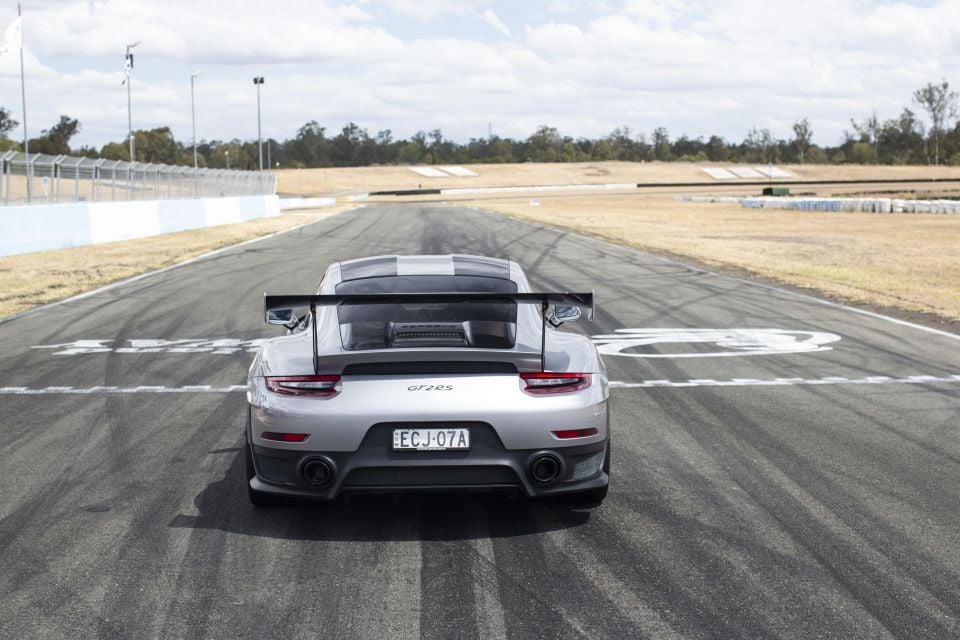
Porsche has obviously limited torque in the early part of the curve, and it would have been scary if the engineers unleashed its full potential because you are already so traction-limited in the lower gears.
The awesome thing is that it barely drops away in the high rpm, giving this feeling of constant acceleration.
The actual performance numbers we achieved were pretty impressive: 0-100 in 3.19 seconds and a ridiculous 60-120 in 2.10 seconds. The second figure is the important one, that’s what you’re using on the track, and it’s over half a second quicker than the GT3 RS (2.67sec).
In a way this engine is more driveable than the GT3 RS. Yes, you are limited by traction, but if you have good control over your right foot, it’s possible to control a nice little power slide off the corner, which leaves a very big smile on your face.
If you’re in the wrong gear or make a little mistake, the engine is always there for you, ready to give as little or as much as you want. And when you ask for a lot, then you get that and then some!
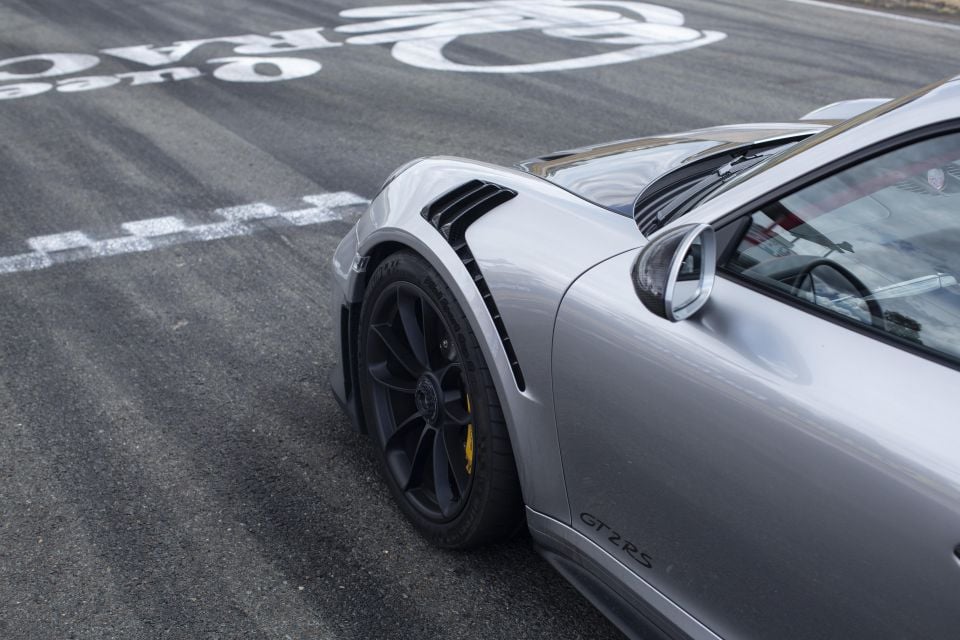
Here we have a slight difference to the GT3 RS, with the GT2 RS getting Porsche’s Ceramic Composite Brakes (PCCB) as standard. To be honest the only major thing I noticed was the warm-up, which took a couple of good stops on the out lap to get them up to temperature.
We only do two outings of two laps on a short circuit, so I can’t say too much about any endurance differences between the two brake systems.
As with the GT3 RS, but to another level, it’s hard to nail your braking point on the first few laps because the speed is so epic. Trying to judge that with an assisted pedal and road tyres is not as easy as it sounds.
Overall it’s hard to deny the numbers, it’s the best car we have seen from 100-0 at 2.69 seconds over only 34.65m and it will be interesting to see if anything else can match that.
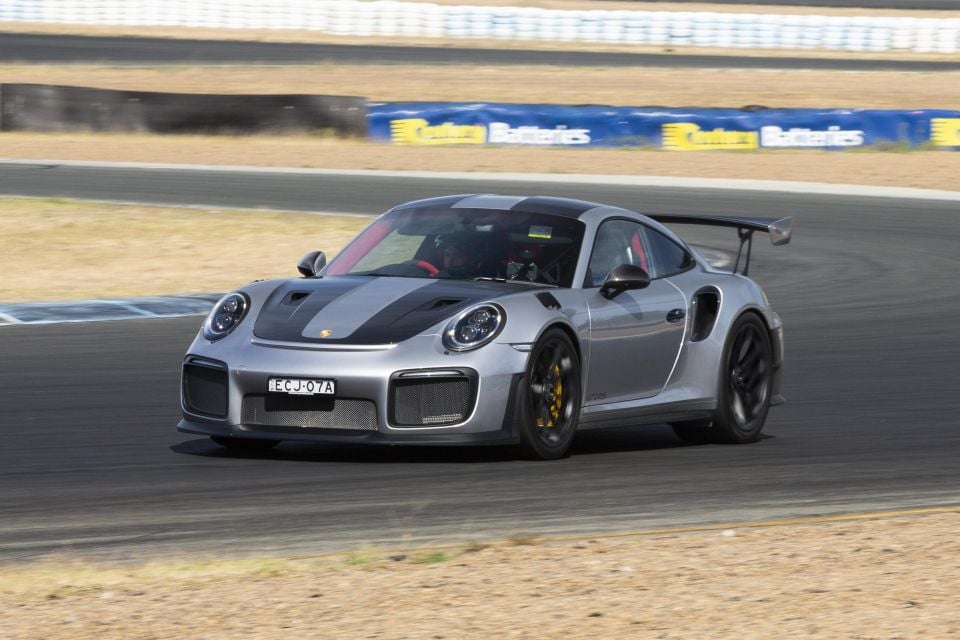
I obviously had a very similar feeling to the GT3 RS here, it is very pointy and reactive!
The difference comes with the driving style – in the GT3 RS I was really focused on getting the entry right and flowing the car through the corner, whereas with the GT2 RS, my main focus was positioning the car for the exit and trying to get it as straight as possible so I could lean on the engine’s immense power.
I did feel like the GT2 RS had slightly more of a tendency to oversteer on rotation. It is carrying 40kg more than the GT3 RS, which would be mostly located rearward, but I really feel like this was more down to tyre life and any slight alignment differences between the two cars rather than the weight.
The awesome thing is you have two very different cars in terms of the way they deliver power, and you can drive both very differently, and yet you still get amazing results and feedback which gives you the feeling this chassis could handle anything.
I also played with the aerodynamics on this car after I completed the timed laps. I adjusted the wing to its full down position, to see if it would control the entry and mid corner a little, without creating any push.
I feel like there was a small gain in progression, but I can’t say it would have made any noticeable time gains.
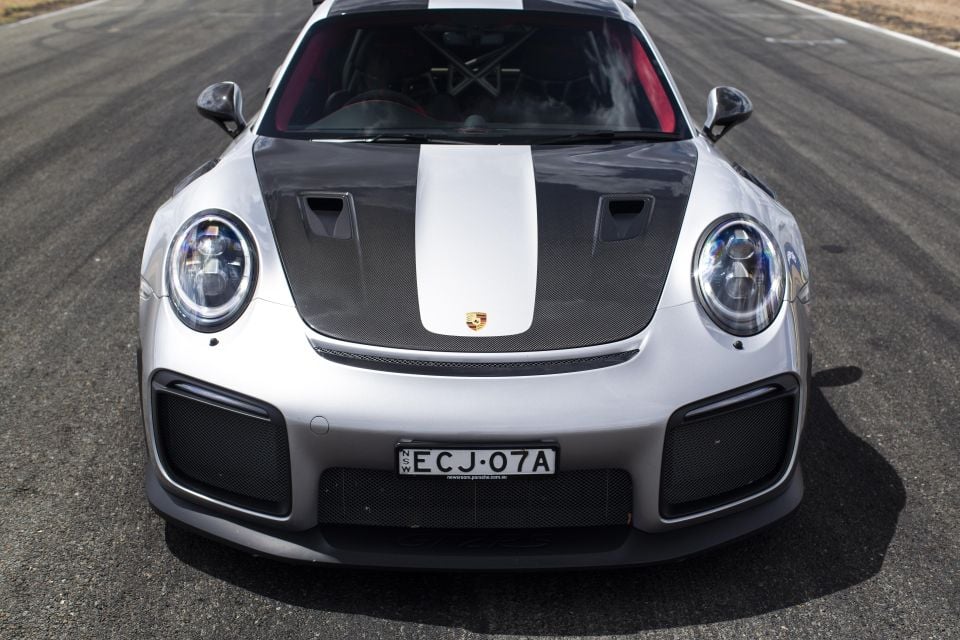
The seven-speed PDK transmission is once again so engaging to drive and I am really happy that it is the one controlling those shifts and blending the changes so well, as this car would be a real challenge with a manual box.
The gear ratios are slightly different to the GT3 RS, but with this engine it’s hard to ever be in the wrong gear. Off the corners I would basically try to be in the highest gear I could get away with and go from there.
It accelerates so fast that the more time you have to think about your gear shift, the less chance you have of hitting the limiter.
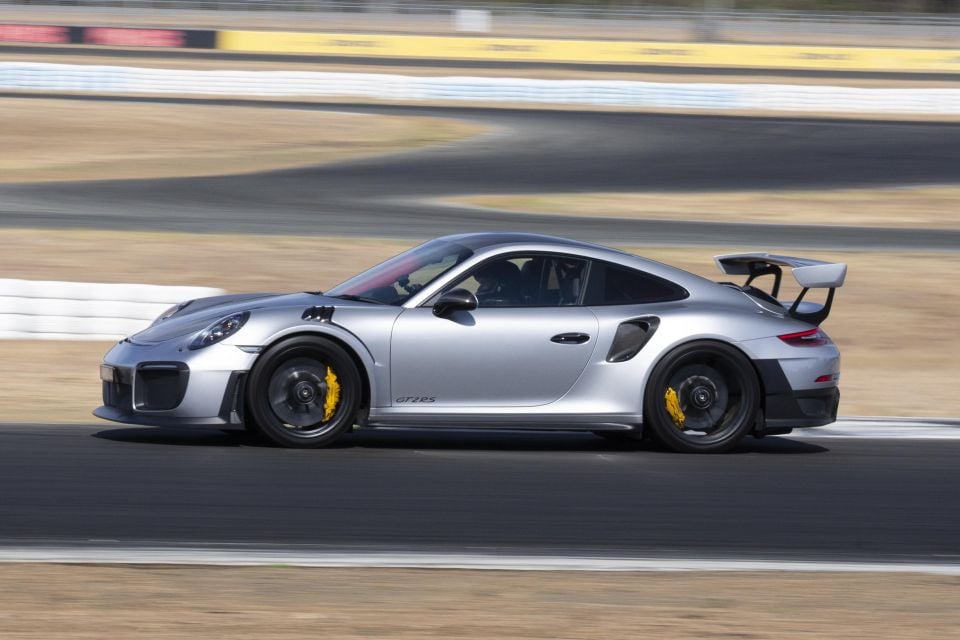
That being said, if you grabbed a gear a bit early, it didn’t matter as you always fell in a rev band that had enough torque to send you forward.
The differential was smooth and dealt with the freeness required for rotation and the locking control and progression needed for drive.
To deal with this level of power and torque, yet still be easy enough to drive says a lot about the engineering and setup work done on the differential. The oversteer is not scary, it’s controlled and refined, which is something you can manage.

The suspension is so controlled and stable, on smooth high-speed corners it offers support and a platform you and lean on. In low-speed sections, there is still enough movement to have progressive traction with a nice amount of squat, but without falling over.
As with the GT3 RS, I would recommend the standard setting unless the circuit is billiard table smooth. The extra movement offers a little more room for error and makes the slides slightly less edgy.
Ticks all the boxes here!
Nicely weighted, great feedback, precise and connected – why can’t more manufactures get this right?
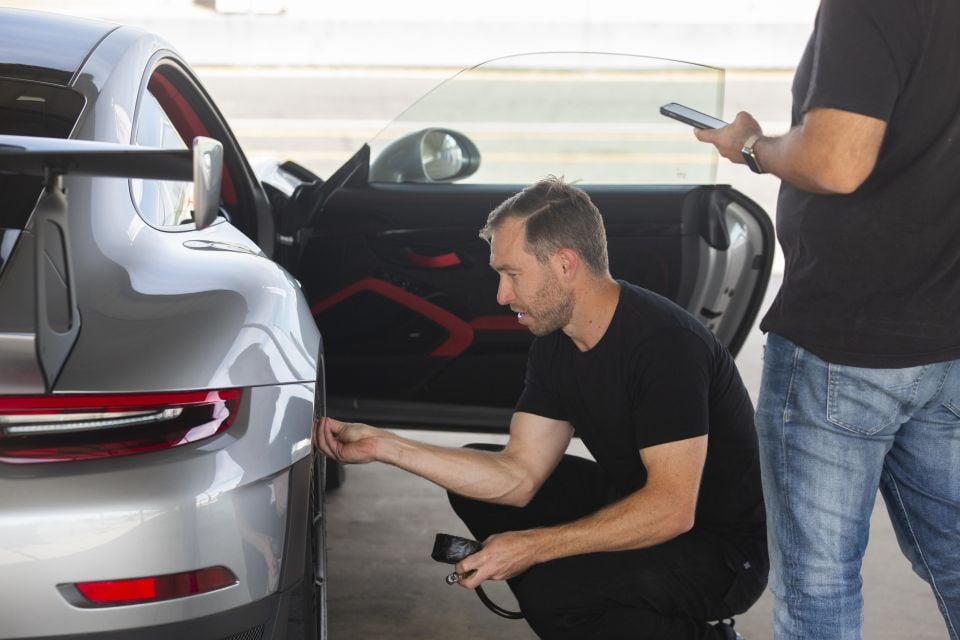
Once again, the awesome lateral grip and traction you get from the huge 325/30 R21 Michelin Pilot Sport Cup 2 rear tyres is pretty solid considering what’s being asked of them.
Hard to ask much more from a tyre you can use on the road.
I drove with the ESC and traction control on and think the level of flexibility it gave me while still offering some security was very close to spot on. The moments when it intervened more than I would have liked were usually when I was well past the point of extracting the most performance.
Unlike the GT3, it is very easy to ask too much on corner exit, but it’s once again down to the driver to control this and the car is just there to respond to your decisions, which is how it should be.
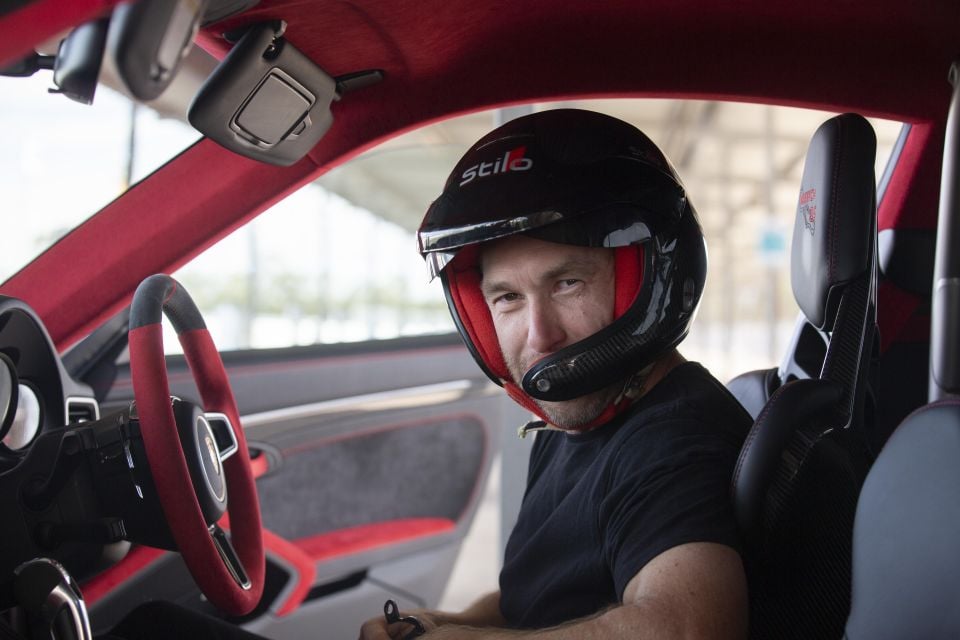
Exactly the same comments as the GT3 RS, with the only complaint being the seat headrest pushing me forward with the helmet on.
Even though it’s a bit simpler and old-school than some of its opposition, it does everything you need and brings all your focus to the road ahead, not the distractions inside.
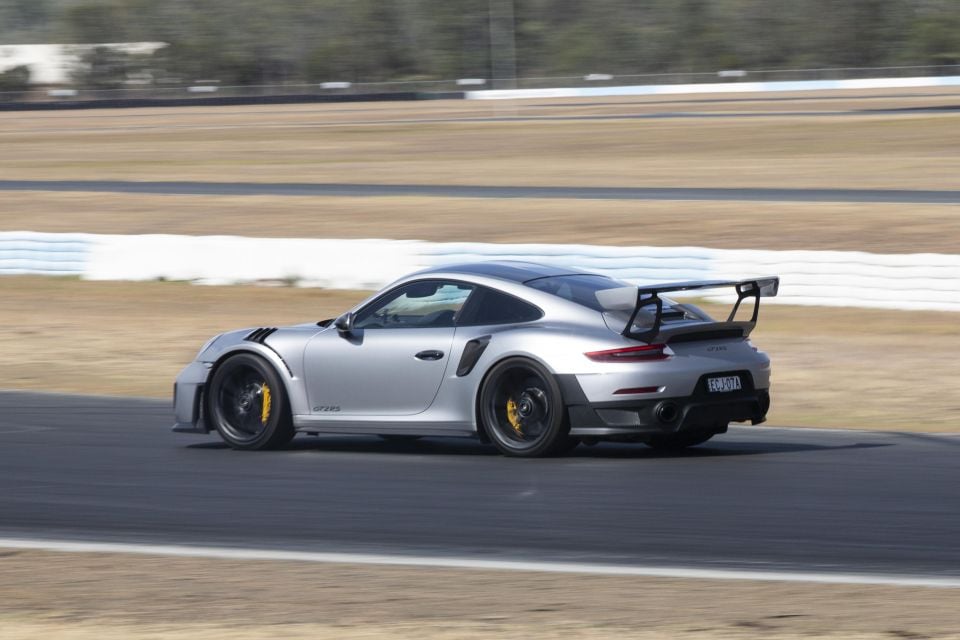
Running the GT3 and GT2 on the same day was always going to be interesting, and the fact that we gave the GT2 RS the second billing was both an advantage and a disadvantage.
I had become accustomed to the track and speed already in the GT3 RS, but the temperature was rising and the direct sunlight beating on the tarmac was taking away some of the grip.
For what is a beast of a car, the lap times where incredibly consistent. On my first lap I did a 54.41 seconds taking six-tenths off the GT3 RS, followed by two more laps on the same tenth, then finally a 54.31 seconds.
What the GT2 RS gave me was the flexibility to get away with mistakes. The engine is so epically useful across the rev range, matched with a precise and refined chassis. It made these lap times look easy!
You can see how the Porsche 911 GT2 RS compares to other cars we have tested previously at our Lap Time Leaderboard page.

Click on the images for the full gallery
Where expert car reviews meet expert car buying – CarExpert gives you trusted advice, personalised service and real savings on your next new car.


CarExpert.com.au
2 Days Ago


Derek Fung
6 Days Ago
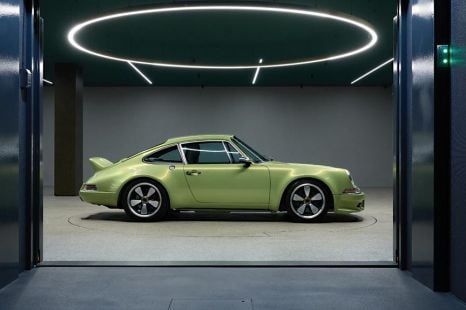

Marton Pettendy
22 Days Ago
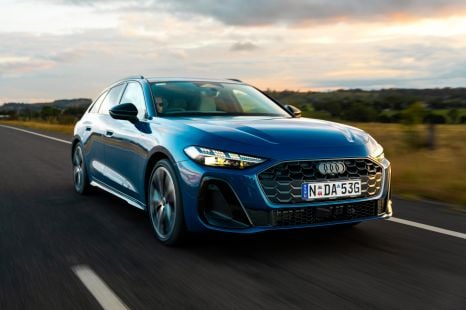

James Wong
30 Days Ago
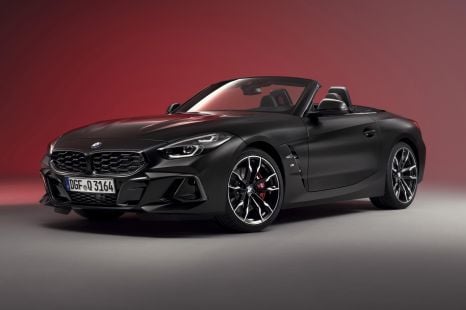

Damion Smy
1 Month Ago
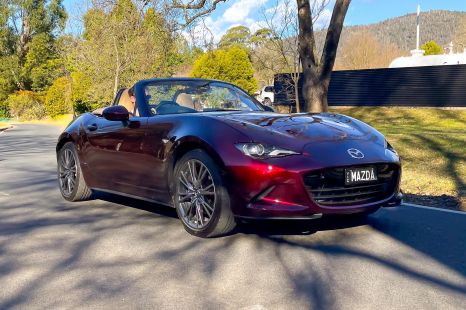

Josh Nevett
1 Month Ago